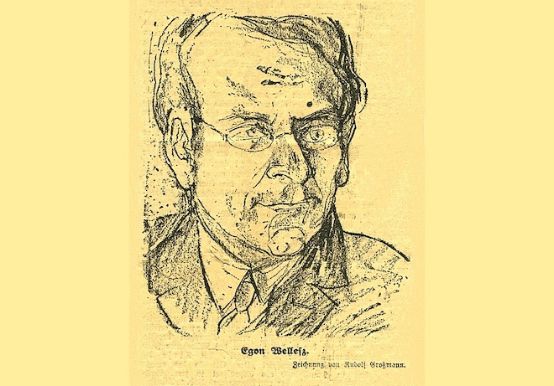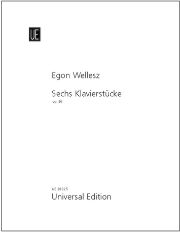Unmistakable atmosphere
Egon Wellesz wrote his "Six Piano Pieces" op. 26 in 1919 and they are now available in print for the first time.

"I never felt rushed when I began to compose, because if I was captivated by a reproach, I was completely under the spell of the ideas and wrote my music without letting anything else stop me."
Egon Wellesz (1885-1974) was an independent spirit throughout his life. His catalog of works, comprising more than one hundred opus numbers, bears witness to this. In addition to a great deal of chamber music and numerous symphonies, it contains no fewer than eleven stage works. Wellesz never allowed himself to be pinned down stylistically. His early Three sketches for piano op. 6, for example, are more radical than anything his teacher Arnold Schönberg had composed up to that point. On the other hand, his Piano Concerto op. 46 from 1931 moves in a field between neo-baroque and post-romanticism. His nine symphonies, written in England, represented for him "a spiritual return to his great ancestors", which earned him fierce criticism from the avant-garde.
The Six piano pieces op. 26 have now been published by Universal Edition for the first time more than a hundred years after they were written. They also show how independently Wellesz handles the harmony and how he is able to immediately create an unmistakable atmosphere with just a few notes. This is particularly true of the two meditative No. 1 (Tranquillo) and No. 3 (Lento). In No. 2 and No. 4, on the other hand, the joyful, dance-like element dominates.
The short pieces are also pianistically varied, but generally quite undemanding. No. 4, however, requires a nimble right hand if the prescribed tempo is to be realized. And in No. 6, large hands are an advantage if you don't want to soften the dramatic effect of the wide-ranging chords by arpeggiating. This piece in particular points beyond the piano; and Wellesz later used the thematic material for his opera Alkestis used.
The appendix to this first edition contains another piano piece for Opus 26, whose fate was exactly the opposite. Wellesz discarded it for not entirely incomprehensible reasons. The musical ideas here are indeed too short-winded, the spark doesn't really want to jump.
Overall, the Six piano pieces op. 26, however, "definitely enriches the piano literature of the Viennese School", as editor Hannes Heher rightly states in the preface.
Egon Wellesz: Six Piano Pieces op. 26, first edition by Hannes Heher, UE 38225, € 19.95, Universal Edition, Vienna








